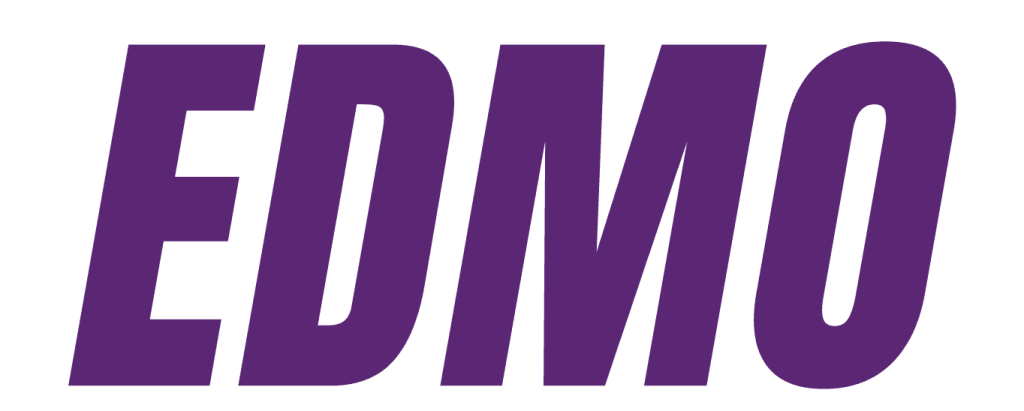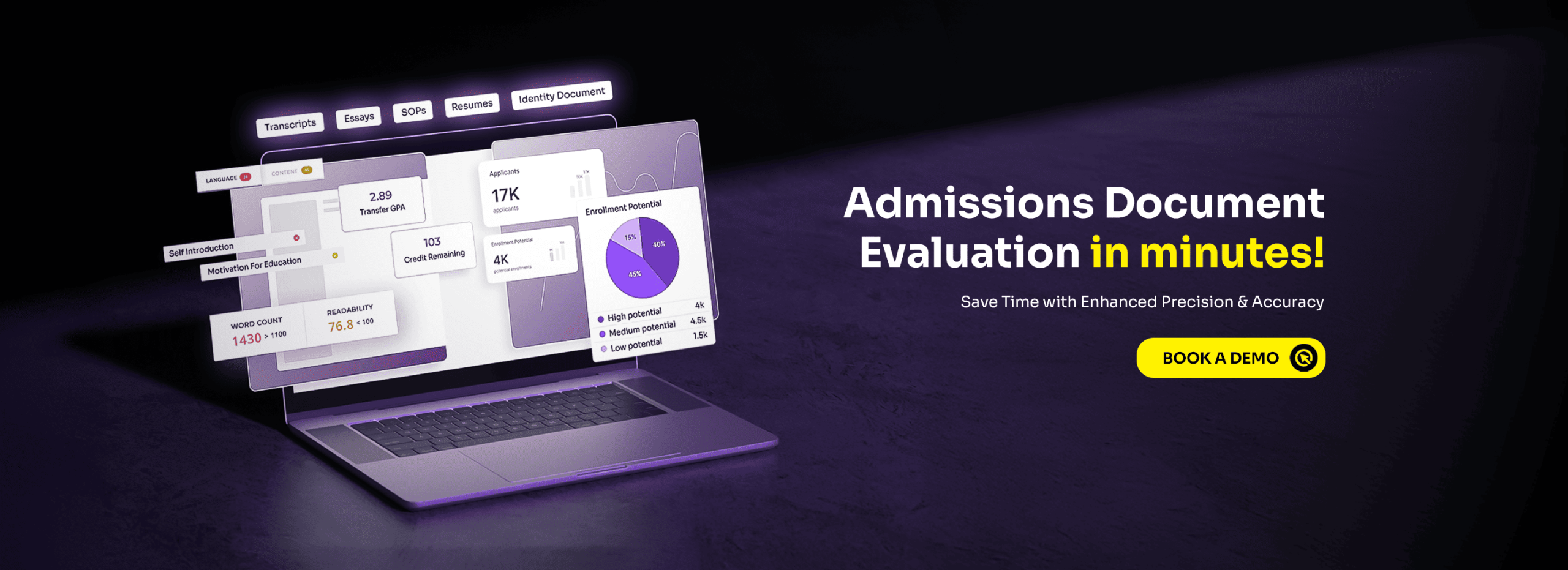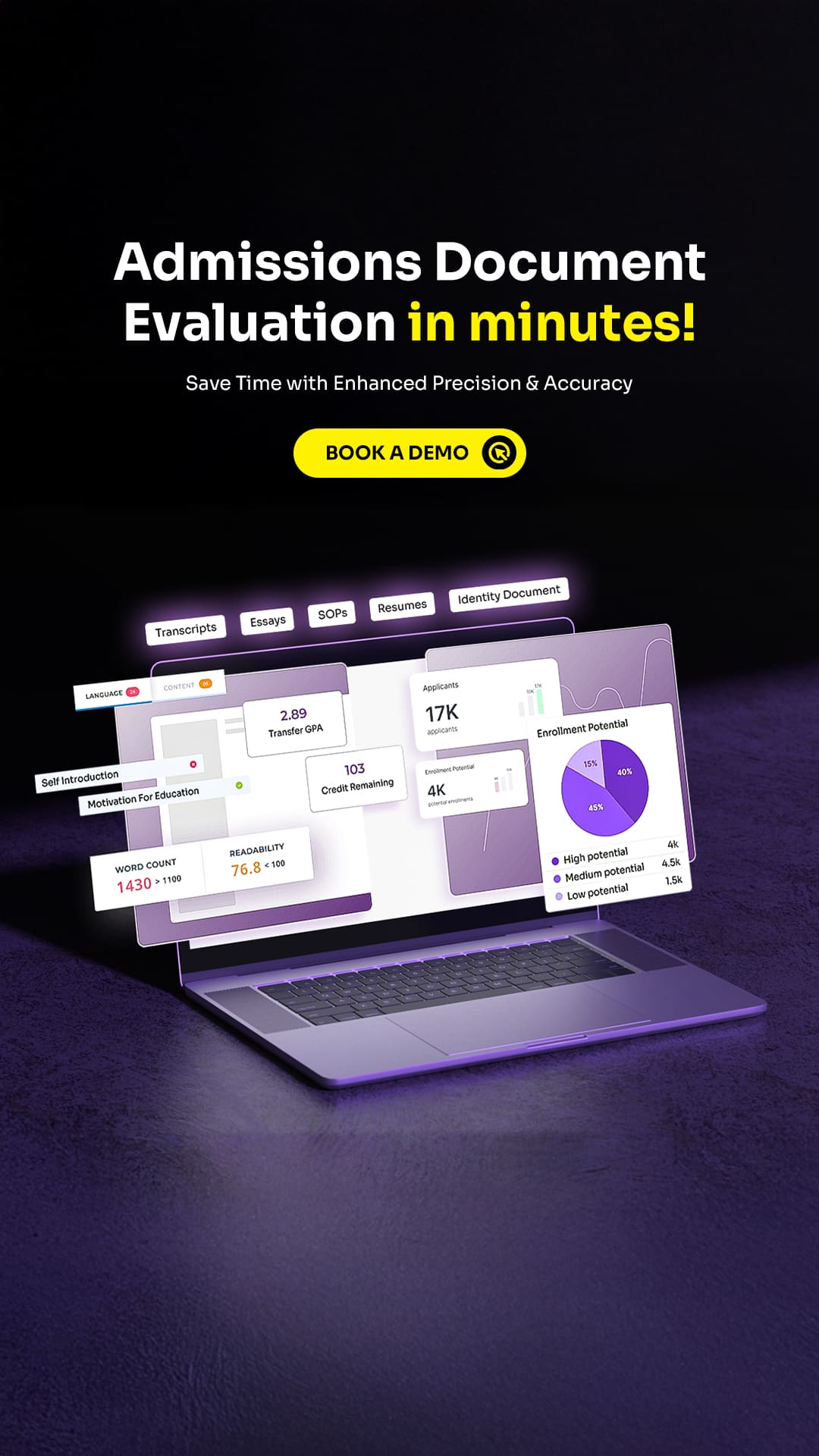Table Of Contents
Introduction
Most people think of running a college or university as a purely educational pursuit. And while that remains at the heart of higher education, the reality today is much broader. Leading a university also entails managing a complex array of risks, including cyberattacks, financial instability, regulatory shifts, and reputational fallout, among others.
These risks pose a threat to an institution’s ability to educate, innovate, and serve its community. What complicates matters further is that these risks are emerging from different environments than what you’d expect to hear in the higher education sector.
One of the most pressing issues is financial instability; more than 60% of higher education leaders cite funding and fiscal sustainability as a top institutional risk. Meanwhile, soaring overhead costs — from healthcare to student wellness services — place additional strain on budgets.
At the same time, student debt burdens and affordability concerns are undermining access to and equity in education. High debt loads restrict graduates’ ability to invest, start businesses or save for retirement. Declining public confidence also poses a reputational risk, as institutions increasingly face scrutiny over their outcomes, value, and purpose. Regulatory and policy shifts — in areas such as accreditation, funding models, and compliance — further compound uncertainty.
Emerging risks now amplify longstanding challenges. Cybersecurity threats, privacy breaches, and algorithmic bias in student data systems are becoming increasingly routine concerns. The rapid rise of generative AI and large language models introduces pedagogical, ethical, and integrity dilemmas in teaching, assessment, and academic integrity. Climate disruptions, campus safety, and environmental resilience also pose significant challenges.
Top 10 Current Challenges in Higher Education

When we break down the “current challenges in higher education” into distinct points, it helps in three ways:
- Clarity and focus — each challenge has its own causal dynamics and stakeholders, so separating them aids diagnosis.
- Comparability and prioritization — institutions can assess which challenges are most pressing in their specific context.
- Targeted strategy design — different problems require different kinds of responses (financial, technological, pedagogical).
Below are 10 key challenges often cited across global higher education systems. For each, I outline the underlying risk drivers, evidence or data examples, and potential strategies for mitigation or adaptation.
Financial Sustainability & Rising Costs
Financial instability is the most pressing issue facing universities today. Institutions are balancing reduced state funding with increased operational expenses, leaving many vulnerable to closure.
Risk Drivers
- Declining state appropriations for public universities are forcing tuition hikes.
- Dependence on tuition revenue at small private colleges.
- Rising fixed costs, faculty salaries, health insurance, pensions, compliance requirements, and student wellness programs.
- Growing infrastructure needs (digital transformation, housing, labs).
Examples & Data
- More than 100 U.S. institutions have shut down since 2016, citing unsustainable finances.
- In 2025, 60% of university CFOs identified cost pressures as their top institutional risk.
- Deloitte notes escalating student services and healthcare costs are creating “structural budget deficits”.
Solutions
- Diversify revenue: continuing education, online microcredentials, executive training, and corporate partnerships.
- Modernize operations: utilise AI automation for admissions, HR, and financial aid to reduce administrative costs.
- Performance-based budgeting is tied to retention and graduation outcomes.
- Strategic program review: sunset low-demand programs, reinvest in high-growth fields (STEM, health, AI).
Enrollment Decline & Demographic Shifts
The “enrollment cliff” poses a threat to institutional stability, particularly in North America and parts of Europe, due to declining birth rates.
Risk Drivers
- Declining birth rates mean fewer 18–22-year-olds in the U.S., Japan, South Korea, and parts of Europe (“Enrollment Cliff”).
- Increased competition from online alternatives like Coursera, Google Career Certificates, and bootcamps.
- Immigration and visa restrictions are reducing the number of international students.
Examples & Data
- Undergraduate enrollment in the U.S. fell 9% between 2019 and 2023. By 2026, a 15% drop in traditional undergraduates is projected.
- In India, some states report over 70% of undergraduate seats remaining vacant in government colleges.
Solutions
- Target adult learners and working professionals through part-time, online, and flexible programs.
- Strengthen international student recruitment in diverse markets (beyond China & India).
- Improve retention by using predictive analytics to identify at-risk students early, enhance advising, and provide targeted academic support.
Student Debt & Affordability
Rising tuition costs outpacing income growth have created a global debt crisis, making higher education inaccessible for many.
Risk Drivers
- Tuition growth outpaces inflation and wage growth.
- Insufficient grants and need-based aid.
- The rising cost of living (housing, food, transport) adds to the tuition burden.
Examples & Data
- U.S. student debt exceeds $1.6 trillion, affecting 44 million borrowers.
- In the UK, over 150,000 graduates owe more than £100,000 in loans.
- Gallup’s 2025 survey found that 57% of unenrolled adults considered enrolling but cited affordability as the primary barrier.
Solutions
- Expand state/federal free tuition initiatives (e.g., New York’s Excelsior Scholarship).
- Scale income-driven repayment (IDR) plans tied to graduate salaries.
- Lower costs by adopting open educational resources (OER) instead of expensive textbooks.
- Partner with employers for tuition reimbursement or apprenticeship models.
Technological Disruption & AI Risks
Technology is transforming higher education, but it also presents risks in cybersecurity, data privacy, and the ethical use of AI.
Risk Drivers
- Universities face threats such as ransomware, phishing, and cloud breaches.
- Ethical issues in AI: plagiarism, algorithmic bias in admissions, and data misuse.
- Rapid adoption of generative AI without faculty training.
Examples & Data
- In 2024, 79% of schools were affected by ransomware, with 56% of those schools paying ransoms.
- EDUCAUSE 2023 survey: 74% of institutions had a cyber incident.
- Studies highlight AI hallucinations, bias, and integrity issues in education.
Solutions
- Multi-factor authentication, data encryption, and cyber awareness training.
- Create AI ethics guidelines for teaching, grading, and admissions.
- Use AI responsibly: adaptive learning platforms, chatbots, plagiarism detection with human oversight.
Equity, Access & Inclusion Gaps
Higher education continues to grapple with inequities for first-generation, low-income, and minority students.
Risk Drivers
- Socioeconomic barriers for first-gen, minority, and rural students.
- Digital divide: lack of broadband and devices.
- Structural bias in admissions and financial aid systems.
Examples & Data
- More than 50% of first-generation students in the U.S. drop out before graduation.
- OECD reports students from wealthier families are 3x more likely to access tertiary education than low-income peers.
Solutions
- Provide laptops, hotspots, and affordable internet programs.
- Expand inclusive curricula and culturally responsive teaching.
- Increase representation of underserved groups in faculty and leadership.
- Peer mentorship and bridging programs for first-gen students.
Student Mental Health & Well-being
Mental health has become a top priority as students face rising academic, financial, and social pressures.
Risk Drivers
- Pandemic isolation, academic stress, and financial strain.
- Limited counselling staff vs. growing demand.
- Social media pressures are amplifying anxiety.
Examples & Data
- 44% of college students report depression symptoms.
- Campus counselling centres saw a doubling of demand between 2019 and 2023.
- WHO found that one in five young people globally experiences mental health issues.
Solutions
- Expand tele-mental health and digital counselling.
- Train faculty/staff in Mental Health First Aid.
- Peer-led support and wellness workshops.
- Normalize seeking help through awareness campaigns.
Declining Public Trust & ROI of Degrees
The value of higher education is under increasing scrutiny as students and families question the return on investment.
Risk Drivers
- Rising tuition without clear job outcomes.
- Political polarisation raises questions about higher ed’s role.
- Perceived elitism and lack of transparency.
Examples & Data
- Gallup (2023): only 36% of Americans trust higher ed, down from 57% in 2015.
- Surveys indicate that employers are increasingly preferring short-term credentials over traditional degrees.
Solutions
- Publish transparent graduate employment data (placement rates, salary outcomes).
- Embed career services and internships in degree pathways.
- Foster public engagement to highlight the role of higher education in social mobility and innovation.
Regulatory & Policy Uncertainty
Higher education is susceptible to regulatory shifts, from accreditation to immigration policies.
Risk Drivers
- Shifting visa rules for international students.
- Changing accreditation requirements.
- Rising compliance costs (Title IX, data privacy laws like GDPR).
Examples & Data
- U.S. visa issuance delays in 2024 caused disruptions in fall international enrollments (IIE Open Doors).
- The UK’s reforms to post-study work visas temporarily reduced international student numbers in the 2021–22 academic year.
Solutions
- Scenario planning for enrollment under multiple policy regimes.
- Compliance modernization through automation tools.
- Diversify recruitment pipelines across multiple regions.
Workforce Alignment & Skills Gaps
Employers are demanding job-ready graduates, but curricula often fail to keep pace with the evolving needs of the labour market.
Risk Drivers
- Slow academic governance delays curriculum updates.
- There is a growing demand for digital, STEM, and soft skills that are not adequately taught in universities.
- Employers expect graduates to be “job-ready” on their first day.
Examples & Data
- World Economic Forum: By 2027, 44% of workers’ skills will be disrupted.
- McKinsey: 87% of companies face skill gaps, especially in digital and leadership areas.
Solutions
- Embed work-integrated learning (co-ops, apprenticeships, internships).
- Co-create curricula with employers.
- Offer a modular microcredentials stackable into degrees.
- Invest in lifelong learning and reskilling.
Globalization & Geopolitical Pressures
Global higher education mobility is facing disruptions due to geopolitics, climate change, and competition from emerging education hubs.
Risk Drivers
- International tensions, visa crackdowns, and climate migration.
- Overdependence on a few sending countries (China, India).
- Competition from emerging education hubs (Canada, Australia, Singapore, UAE).
Examples & Data
- The U.S. hosted 1,057,188 international students in the 2023–24 academic year (IIE).
- China’s outbound student numbers are slowing, reshaping global flows.
- Australia’s universities rely on 25–30% of revenues from international students, creating vulnerability.
Solutions
- Diversify recruitment (Africa, Latin America, SE Asia).
- Build offshore campuses and dual-degree programs.
- Develop “glocal” curricula that address both global and local issues.
- Invest in climate resilience for campuses and mobility planning.
Proven Solutions and Best Practices to Avoid Common Problems in Higher Education
Higher education institutions face unprecedented pressures, ranging from enrollment declines and rising costs to technological disruptions and concerns about student well-being. However, proven strategies and best practices are emerging worldwide to help universities remain resilient, student-centred, and financially sustainable. By adopting innovative models, investing in technology, and prioritising equity, institutions can not only overcome challenges but also unlock new growth opportunities. Recent surveys indicate that over 70% of higher education leaders are actively rethinking their operating models. Moreover, data-driven practices have been shown to increase student retention by 10–15%, while digital transformation has cut administrative costs by up to 25%.
Financial Risk Management through Diversification
Most universities still rely heavily on tuition revenue, leaving them highly vulnerable to enrollment drops or funding cuts. When student numbers decline (as in the U.S., known as the “enrollment cliff”), institutions face budget crises.
Best Practice: Develop multiple income streams beyond tuition. These include:
- Professional and continuing education programs for adult learners.
- Short-term online courses and micro-credentials.
- Research partnerships with government and industry.
- Philanthropy and endowment growth.
Why It Works: Diversification reduces dependence on a single revenue source. For instance, Arizona State University generates over $ 150 million annually from online programs, creating financial buffers against enrollment shocks.
Strengthening Enrollment & Retention with Data Analytics
Falling demographics and student dropouts cost universities millions. Retention rates are as important as new student recruitment.
Best Practice:
- Utilise predictive analytics to identify students at risk.
- Deploy AI-powered early-warning systems for advising.
- Personalise student outreach based on performance and engagement with Conversation Intelligence flags, identifying at-risk students early through sentiment/intent analysis, and utilising AI chatbots to keep them supported in real-time.
Why It Works: Georgia State University’s advising analytics boosted graduation rates by 23% and eliminated achievement gaps across racial/ethnic groups. By acting on data signals (such as missed classes and unpaid fees), institutions can intervene before students leave.
Improving Affordability & Reducing Debt
Tuition inflation outpaces income growth. Rising student loan debt erodes trust in higher education.
Best Practice:
- Tuition-free models (e.g., New York’s Excelsior Scholarship).
- Income-driven repayment (IDR) is tied to graduate earnings.
- Employer-sponsored education (Amazon’s “Career Choice” program).
- Expansion of need-based scholarships.
Why It Works: Affordability initiatives not only improve access but also increase enrollment from low-income families. IDR and employer partnerships lower student risk while sustaining institutional revenues.
Building Cybersecurity & Data Privacy Resilience
Universities hold sensitive research and personal data, making them prime targets for ransomware. Cyber incidents damage finances, reputation, and compliance.
Best Practice:
- Multi-factor authentication and network segmentation.
- AI-based monitoring for threats.
- Regular penetration testing and staff training.
- Compliance with global standards, such as GDPR and FERPA.
Why It Works: EDUCAUSE found 74% of institutions faced cyber incidents in 2023. Institutions with layered defences respond faster, reduce downtime, and protect brand trust.
Promoting Equity, Access & Inclusion
First-generation, rural, and minority students face systemic barriers, leading to lower enrollment and graduation rates.
Best Practice:
- Bridge and mentorship programs for first-gen students.
- Digital access initiatives (laptops, Wi-Fi hotspots).
- Inclusive pedagogy and culturally responsive teaching.
- Targeted scholarships for underrepresented groups.
Why It Works: Institutions that run structured support programs reduce dropout rates. Studies show bridge programs improve retention by 15–20% among underserved students.
Prioritizing Student Mental Health & Well-being
Student anxiety, depression, and burnout are at crisis levels. This affects learning, retention, and graduation.
Best Practice:
- Tele-mental health and virtual counselling services.
- Peer-support networks and wellness apps.
- Faculty/staff training to identify early signs of distress.
- Preventive well-being campaigns.
Why It Works: The Healthy Minds Study (2023) found that 44% of students reported experiencing symptoms of depression. Universities that expanded mental health support saw higher engagement and persistence rates.
Rebuilding Public Trust with Transparency
Public confidence in higher education has fallen—only 36% of Americans trust universities (Gallup, 2023). Rising costs without clear job outcomes fuel skepticism.
Best Practice:
- Publish ROI dashboards: graduation rates, salaries, and loan default rates.
- Freeze or cap tuition growth (e.g., Purdue’s tuition freeze since 2012).
- Showcase student success stories and career pipelines.
Why It Works: Transparency builds accountability. Purdue’s tuition freeze boosted enrollment and applications by double digits, proving trust can be rebuilt with openness.
Enhancing Compliance & Policy Adaptability
Visa policies, accreditation standards, and federal/state regulations shift constantly. Compliance failures can lead to penalties and enrollment losses.
Best Practice:
- Automate compliance reporting using AI-driven systems.
- Maintain legal/policy monitoring units to track changes.
- Develop contingency plans for international enrollment shocks.
Why It Works: Australian universities that diversified recruitment beyond China maintained stable enrollments despite geopolitical tensions. Compliance agility reduces operational and reputational risks.
Aligning Programs with Workforce Skills
Employers report skill gaps in graduates, primarily in digital, analytical, and soft skills. Traditional curricula often fail to keep pace with market needs.
Best Practice:
- Embed experiential learning (internships, co-ops, apprenticeships).
- Co-design curricula with employers.
- Offer stackable micro-credentials aligned to industry standards.
- Lifelong learning programs for alumni reskilling.
Why It Works: Northeastern University’s co-op program places 90% of students in career-relevant jobs within 9 months. Institutions that integrate workforce skills enhance graduate employability and employer satisfaction.
Building Global & Strategic Partnerships
International student mobility is vulnerable to geopolitical shifts, visa restrictions, and climate disruption. Overreliance on one market (e.g., China, India) creates risk.
Best Practice:
- Diversify student pipelines across Asia, Africa, and Latin America.
- Develop branch campuses and dual-degree programs abroad.
- Invest in digital exchange and hybrid mobility options.
- Partner with multinational employers for global placements.
Why It Works: The U.S. hosted over 1 million international students in 2023–24 (IIE Open Doors), but institutions with diversified strategies are better equipped to shield themselves from shocks.
Summary
Higher education today is about far more than teaching—it’s about navigating a world of financial pressures, demographic shifts, and technological disruption. Universities are increasingly expected to balance affordability, access, and quality while managing risks that range from cybersecurity threats to concerns about public trust. Rising tuition and debt levels are deterring many students, while demographic declines are shrinking enrollment pipelines. At the same time, mental health challenges and equity gaps make it harder for students to succeed once enrolled. Employers are also calling for graduates who are better equipped to meet the rapidly changing needs of the workforce. Yet, institutions are not without solutions. Proven practices—such as diversifying revenue streams, leveraging data analytics to enhance retention, investing in mental health and inclusion initiatives, and fostering global partnerships—are helping many universities adapt. Those willing to embrace transparency, innovation, and resilience are better positioned to thrive in the face of uncertainty.









No comments yet. Be the first to comment!
Leave a Comment